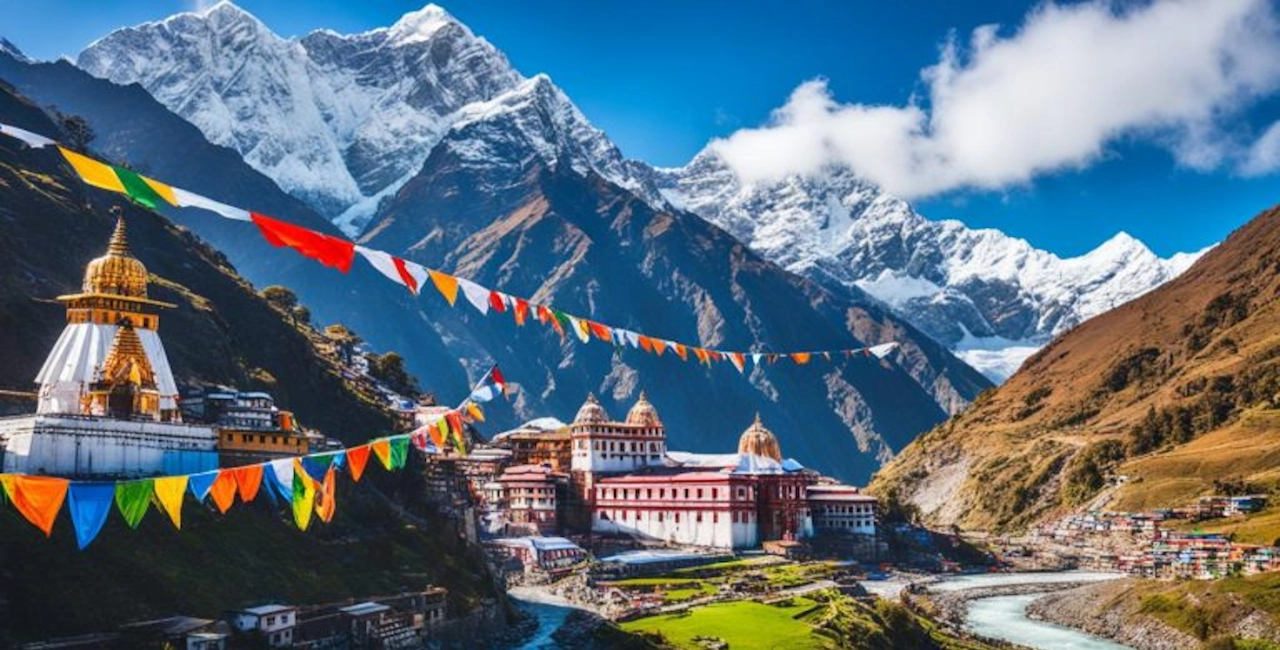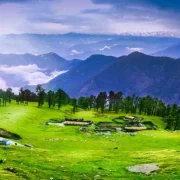
Badrinath: The Sacred Abode of Lord Vishnu Amidst the Majestic Himalayas
Badrinath, one of the most significant and revered pilgrimage destinations in India, is nestled in the majestic Garhwal Himalayas in Uttarakhand. This small town, located at an altitude of approximately 3,300 meters (10,827 feet) above sea level, holds immense spiritual importance in Hinduism. It is dedicated to Lord Vishnu, who is worshiped here in his form as Badrinarayan. Badrinath is not just a place of worship but also a site of historical, cultural, and natural significance, attracting thousands of pilgrims and tourists every year.
The Badrinath Temple
The Badrinath Temple is the focal point of the town, and it is this shrine that gives the town its name. According to Hindu mythology, Lord Vishnu meditated here for thousands of years, and during his penance, he was unaware of the harsh weather conditions. To protect him, Goddess Lakshmi took the form of a Badri tree, shielding him from the elements. Pleased with her devotion, Lord Vishnu named the place Badrika Ashram.
The temple, believed to have been established by Adi Shankaracharya in the 8th century, is a prime example of North Indian temple architecture. The structure has undergone several renovations over the centuries, particularly after natural calamities such as earthquakes. The temple’s facade is built in a typical Garhwali wooden style, with its conical tower standing out against the backdrop of the towering Neelkanth Peak.
Inside the temple, the main deity is Lord Badrinarayan, depicted in a black stone idol, seated in a meditative posture. This idol is said to have been recovered from the Alaknanda River by Adi Shankaracharya. The temple also houses idols of other deities, including Lakshmi, Narayana’s consort, and other gods from Hindu mythology. The sanctum sanctorum is a place of deep spiritual energy, and devotees believe that a visit to Badrinath can help them attain moksha, or liberation from the cycle of birth and death.
Significance in Hinduism
Badrinath is one of the four Char Dham pilgrimage sites, which are considered the most sacred in Hinduism. These four sites—Badrinath, Kedarnath, Yamunotri, and Gangotri—are located in the Himalayas and are traditionally visited by pilgrims in a single journey known as the Char Dham Yatra. Badrinath is also part of the smaller Chota Char Dham circuit, which includes the same sites but within the Garhwal region.
The significance of Badrinath extends beyond the Char Dham. It is also one of the 108 Divya Desams, which are the holy shrines dedicated to Vishnu, revered in the writings of the Tamil Alvar saints. The temple’s location near the Alaknanda River, one of the headstreams of the Ganges, adds to its sanctity, as the Ganges is considered the holiest river in Hinduism.
The Pilgrimage Experience
A journey to Badrinath is not just about the destination but also the experience of traveling through the rugged and scenic Himalayan terrain. The pilgrimage season begins in late April or early May and continues until the onset of winter in November, when the temple closes due to heavy snowfall. During this period, thousands of devotees from across India and abroad make the arduous journey to Badrinath, braving difficult weather conditions and challenging roads.
The town itself, while small, is bustling with activity during the pilgrimage season. Pilgrims can also take a dip in the Tapt Kund, a hot water spring located near the temple, believed to have medicinal properties. The water in this spring remains warm throughout the year, despite the freezing temperatures in the region.
The Natural Beauty
Apart from its religious significance, Badrinath is renowned for its natural beauty. The town is surrounded by towering peaks, including the Neelkanth Peak, which rises dramatically in the background of the temple. The area is also known for its diverse flora and fauna, with the Valley of Flowers National Park, a UNESCO World Heritage Site, located nearby. This park is famous for its meadows of endemic alpine flowers and rich biodiversity.
Conclusion
Badrinath is a place where spirituality, history, and nature converge. For the devout, it is a sacred site where they can connect with the divine. For others, it is a place of serene beauty, offering a glimpse of the grandeur of the Himalayas and the rich cultural heritage of India. Whether one visits for religious reasons or simply to experience the awe-inspiring landscape, Badrinath leaves a lasting impression on all who journey to this ancient town.
Recent Posts
Abbott Mount: A Hidden Gem in the Hills of Uttarakhand
Champawat: A Gateway to the Scenic Beauty and Heritage of Uttarakhand
New Tehri: A Modern Town with a Blend of Nature and Culture
All Categories

Thailand




